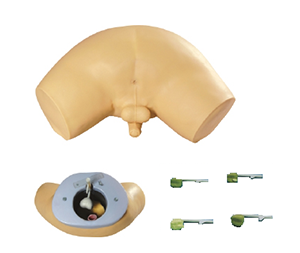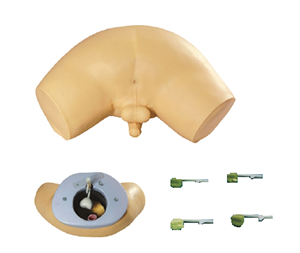
Can prostate screening models reduce errors and improve the safety of clinical procedures?
Article tag: Prostate Screening model BIX-L63 Medical Clinical model

By providing a real and safe training environment, the prostate examination model can help medical students master the skills of prostate examination, reduce errors in operation, and improve the safety of clinical operation. Through repeated practice and data support, students are able to continuously improve their diagnostic capabilities to ensure more accurate and comfortable medical care for patients. This teaching model is undoubtedly an important tool in medical education to promote clinical skills and patient safety
...
Prostate examination is an important operation in men's health management, especially in the early diagnosis of prostate problems (such as prostate hypertrophy, prostate cancer, etc.) is of great significance. However, many clinical procedures may result in misdiagnosis or patient discomfort due to inexperience or unskilled techniques. Can the prostate screening model, as a teaching tool, help reduce screening errors and improve the safety of clinical procedures? Here is an in-depth look at the issue.
1. Simulate real tactile feedback
By accurately simulating the touch and texture of the prostate gland, the prostate examination model provides medical students with a near-real clinical experience. Participants can master the correct palpation skills through the simulation model and perceive the characteristics of different pathological sites. This highly simulated haptic feedback helps students more accurately judge the size, shape and presence of abnormalities such as lumps in the prostate gland, thereby reducing errors caused by improper handling.

2. Reduce discomfort during operation
Clinical prostate examinations can be uncomfortable for patients, especially when performed by inexperienced physicians, and may increase anxiety and physical discomfort. By practicing with the prostate examination model, students can master the correct manipulation and strength, reduce the patient's pain, and improve the comfort of the examination. After training, students are able to conduct clinical examinations with greater confidence, further enhancing patient trust and willingness to cooperate.
3. Strengthen clinical judgment and skills
The prostate examination model can simulate different types of lesions, such as prostate nodules, sclerosis, etc., so that students learn how to distinguish different pathological changes in practice. Through repeated practice, students can improve their sensitivity to clinical abnormalities, make more accurate judgments, and avoid ignoring potential prostate problems. Accurate judgment directly affects the effect of subsequent treatment and reduces the risk of missed diagnosis.
4. Data support and learning feedback
Modern prostate examination models are often equipped with feedback systems that record the student's procedure in real time and generate data reports. These data include the strength of the examination, the depth of palpation, the time of the examination, etc. Through this data, students can accurately understand their own level of operation and make targeted improvements. Studies have shown that with this data-driven training, trainees' operational accuracy is significantly improved, and the success rate of clinical examinations is also enhanced.
Data support:
One study showed that participants trained with a prostate exam model improved their prostate exam accuracy by about 25 percent. In addition, there was a 15% reduction in the error rate during the actual clinical examination, and patient feedback was more positive, indicating that this training greatly enhanced the safety and comfort of the procedure.
By providing a real and safe training environment, the prostate examination model can help medical students master the skills of prostate examination, reduce errors in operation, and improve the safety of clinical operation. Through repeated practice and data support, students are able to continuously improve their diagnostic capabilities to ensure more accurate and comfortable medical care for patients. This teaching model is undoubtedly an important tool in medical education to promote clinical skills and patient safety.

Marketing Center
Hong Kong, ChinaProduction Base
Shanghai, ChinaProducts
Contact Us
 Address: Hong Kong, China
Address: Hong Kong, China
 Phone:+86 19937901373
Phone:+86 19937901373
 Email:sophia@adahealthy.com
Email:sophia@adahealthy.com
 Mobile:+86-0379-65160607
Mobile:+86-0379-65160607








